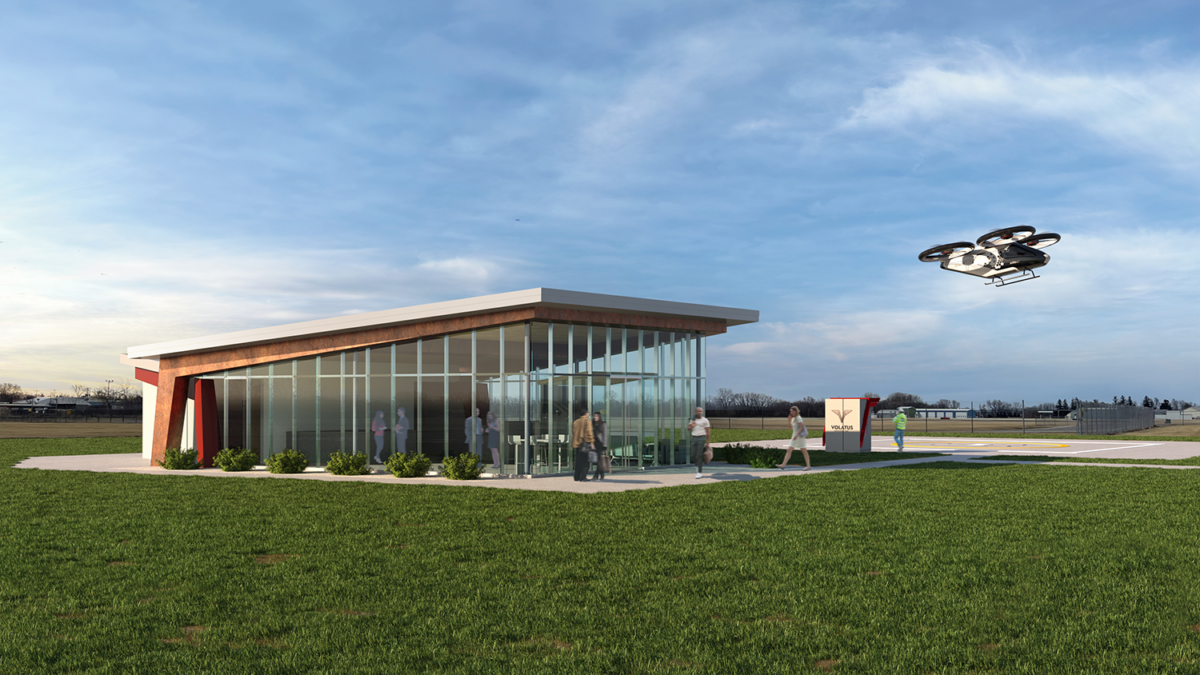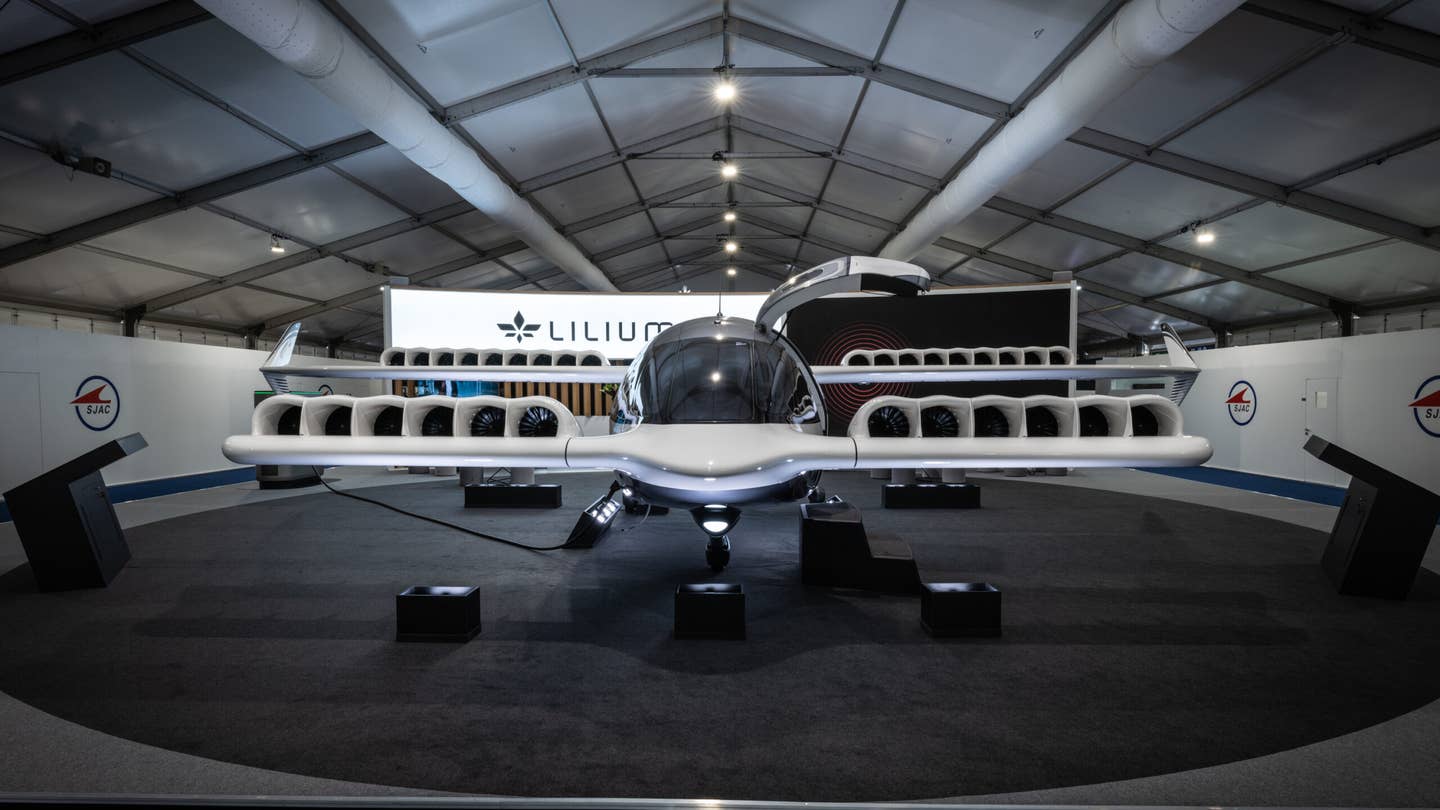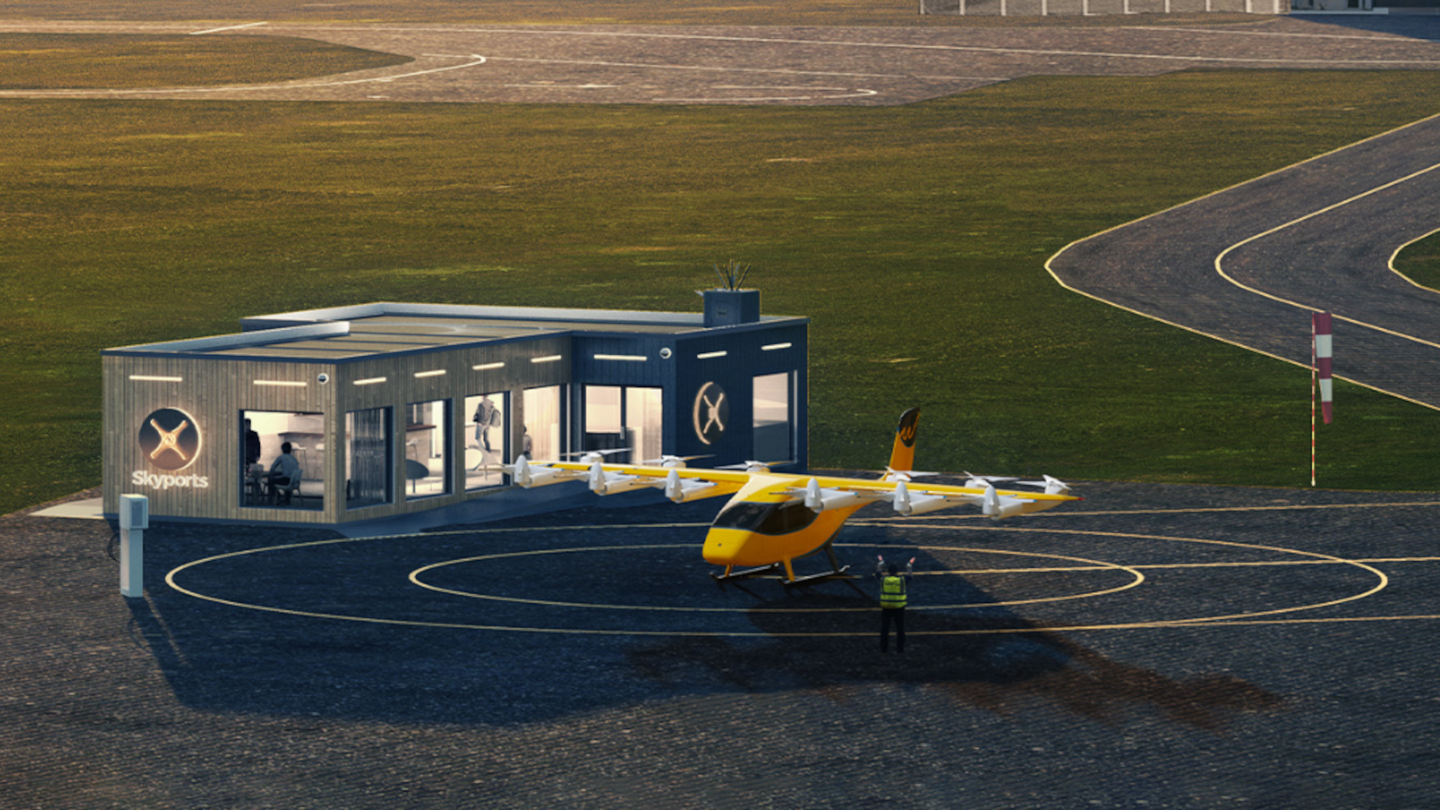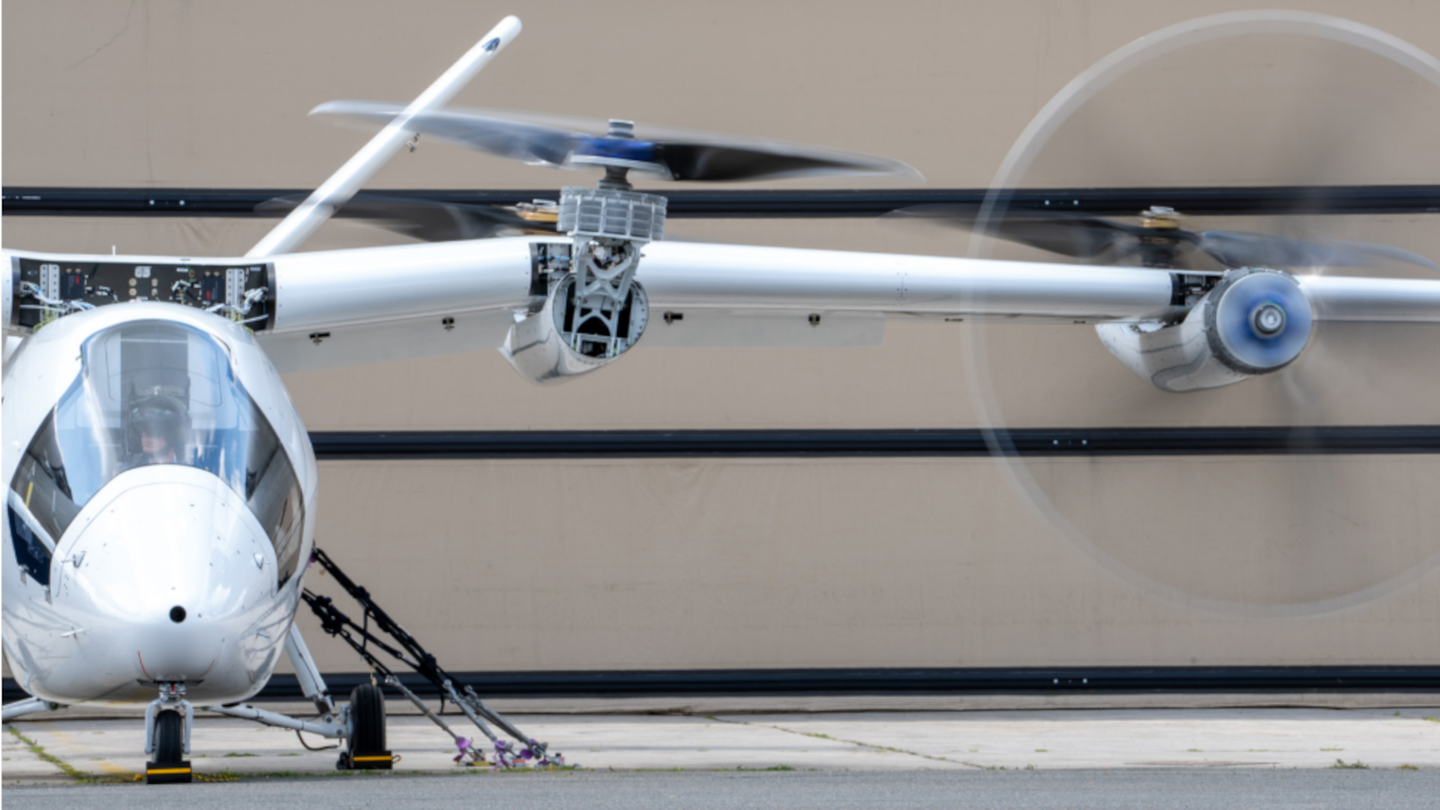NATA Adds Vertiport Firm Volatus to Advanced Air Mobility Committee
The Volatus official is the newest member of the group aiming to spur stakeholder cooperation as AAM integrates into the current aviation ecosystem.

A digital recreation shows Volatus’ planned AAM infrastructure at Wittman Regional Airport (KOSH) in Oshkosh, Wisconsin. [Courtesy: Volatus Infrastructure]
The National Air Transportation Association (NATA) has a new advanced air mobility committee—and it just got larger.
Grant Fisk, who co-founded Volatus Infrastructure, LLC in 2021, on Wednesday became the newest member of NATA’s newest committee, Volatus told FLYING. Fisk became the 18th member of the AAM committee, established in November to, in NATA’s words, “foster the connection between this emerging sector and the Part 135 environment.”
Fisk’s new associates include a who’s who of industry stakeholders, executives, and experts.
Co-chaired by Toni Drummond of Titan Aviation and Craig Teasdale of Ferrovial Vertiports, the committee also includes companies like Joby Aviation, Atlantic Aviation, Beta Technologies, Skyports, Overair, and Southern Sky Aviation. Also making the list are consultancies HMMH and SMG Consulting and aviation-focused law firm Shackleford, Bowen, McKinley & Norton.
The committee’s stated goals are to provide stakeholder input on legislative and regulatory priorities for fixed base operators, airports, and other providers, as well as to foster connections between AAM firms and Part 135 operators.
“It’s an honor to be a part of an association with such deep roots and history in the aviation industry and I am looking forward to working with the other AAM committee members as we blaze this new path forward together,” said Fisk. “We are in the critical planning and preparation time period for AAM as the vehicles start to complete their certifications and the infrastructure ecosystem breaks.”
NATA’s AAM committee held its first meeting back in November, where president and CEO Curt Castagna explained the association’s shift in focus. In his view, AAM has a major role to play in the years ahead—the challenge, though, will be establishing cooperation between those companies and traditional aviation firms.
“The efficiency and effectiveness of AAM development and integration will require strategic leadership to address immediate needs related to ground service, operations, maintenance, and public acceptance,” Castagna explained. “With guidance and input from key stakeholders on our new AAM committee, NATA has the right team in place to drive success in all focus areas for aviation businesses.”
In January, the committee convened again, this time naming its initial membership through a town hall. And later that month, it met with leaders of NATA’s Air Charter, General Aviation Airports, Safety, and Environment committees to discuss AAM integration in areas like operations, safety, maintenance, training, and ground infrastructure.
“NATA was pleased to have a new opportunity to unite its various membership segments toward a common goal,” said Megan Eisenstein, managing director of industry affairs and innovation and staff liaison for the AAM Committee. “It’s important for all aviation businesses to have an understanding, a voice, and a vision for AAM integration into the current aviation ecosystem.”
Eisenstein’s words may come as a relief to pilots, some of whom have voiced hesitancy when faced with the prospect of a technology like AAM creating a seismic shift in aviation.
“As a pilot, it was both inspiring and a little frightening,” wrote CFI Michael Wildes, referring to a panel of AAM stakeholders who spoke at the National Business Aviation Association’s Business Aviation Convention and Exhibition in October 2021.
To Wildes’ point, some fears that pilots have about AAM are valid—namely, the complete removal of humans from the cockpit, which several firms have already stated as their mission. However, as Wildes also pointed out, it could also create new latitude for pilots to hone their skills in fleet management, engineering, and other areas.
But whether you view AAM as a threat or an opportunity, one thing is clear: Integrating the technology with established aviation systems is a challenge that will require intense collaboration among AAM stakeholders, as well as between those players and airports, FBOs, and pilots.

Subscribe to Our Newsletter
Get the latest FLYING stories delivered directly to your inbox






